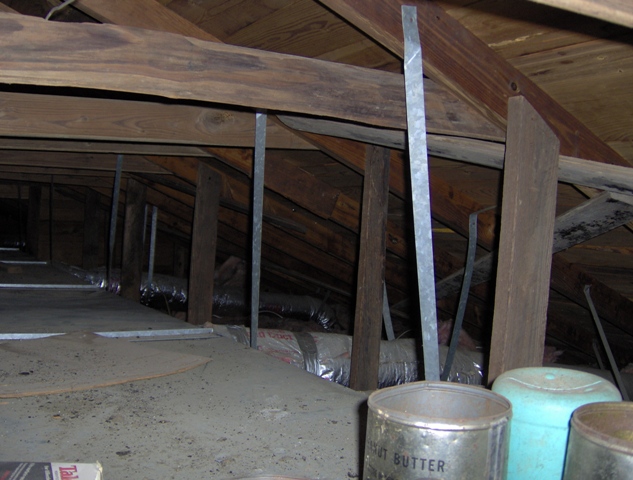 Recently we restarted our Air Sealing & Insulation articles again, and in the most recent article on Hot-Roofs we mentioned that now is a good time to work in your attic (at least if you live in the South). One of the main reasons for this is how hot an attic can get not only during the summer months, but also throughout the year. Nothing beats being in an attic, insulation sticking to you from all the sweat, and you start feeling a dizzy from dehydration. Attic temperatures in most areas of the country can easily reach 140° during the middle of the summer, and in one case, I was in one that hit 180° and I can tell you, it was not fun at all.
Recently we restarted our Air Sealing & Insulation articles again, and in the most recent article on Hot-Roofs we mentioned that now is a good time to work in your attic (at least if you live in the South). One of the main reasons for this is how hot an attic can get not only during the summer months, but also throughout the year. Nothing beats being in an attic, insulation sticking to you from all the sweat, and you start feeling a dizzy from dehydration. Attic temperatures in most areas of the country can easily reach 140° during the middle of the summer, and in one case, I was in one that hit 180° and I can tell you, it was not fun at all.
Now if you happen to live further up North, you might want to put it off until at least March as the opposite is true with the cold temperatures and you should wait for it to warm up some. No matter where you live, here are a few basic precautions and tips you may wish to consider before traipsing through your attic.
- Wear the appropriate clothes – a long sleeve shirt tucked into a pair of gloves and pants is standard. This will help protect you from the insulation and other items that can easily irritate your skin
- Consider wearing at least a hoodie or baseball cap to help prevent any scrapes from nails sticking through the roof sheathing or other areas. Most professionals and “safety experts” recommend a hard hat, but I have generally had more problems wearing those than simply paying attention to where I am at & what I am doing. This is one area, you are going to have to rely on your best judgment
- Wear a respirator – a disposable N95 should suffice to help protect you from any airborne fibers, or other items that could make you ill.
- Safety glasses or better yet goggles should be worn to help prevent getting something in your eye. Beyond the obvious safety factor, you know that Mr. Murphy will make sure if anything happens, it will be when you are at the furthest point from the attic hatch and if your foot slips, it will be above were your wife is cooking or entertaining guests.
- Speaking of footing – most attics are cramped, full of cross braces, duct work, plumbing, electrical wires, etc… Make sure you don’t step on anything that is not a truss or a joist & if at all possible use walk-boards or create a temporary platform to work from. Back when I did some rock climbing, one of the first things we learned was to always have three points of contact, before moving a foot or hand & that has served me well in a few attics with boards not being attached, etc…
- Bring a work light and a flashlight with you – if you attic has a light in it, that is great but we still recommend bringing a flashlight in case Mr. Murphy shows up. Another benefit with the flashlight is it allows you to check areas where the light might not reach as well.
- Disturb as little of the insulation as possible, to help keep down the dirt, dust, mold, fibers, etc… that are located in it. While you may be protected from it, it is flying through the air, through the open hatch & getting on your clothes which will still be worn when you go back into the living spaces.
- Place a drop cloth under the hatch & have a vacuum cleaner handy to vacuum yourself off & any items you may have knocked through the hatch.
- If you spot vermiculite insulation, animals, signs of animals, old wiring (knob & tube / cloth covered wiring) – do not mess with it, please do some research & bring in a professional to take care of any options.
- So when was your last tetanus shot? As I recall if it has been 7 years or more, you should get a booster shot, and if you do get any knicks or cuts – make sure you take care of them properly & as promptly as possible (No you don’t have to drop everything, but you should take care of it during your next break at the latest)
Additional Info & Website’s
Tool Box Talk: OSHA – Weather Insulating & Sealing (Covers numerous issues including confined spaces, electrical, respiratory, and PPE)
The EPA & Vermiculite Insulation
